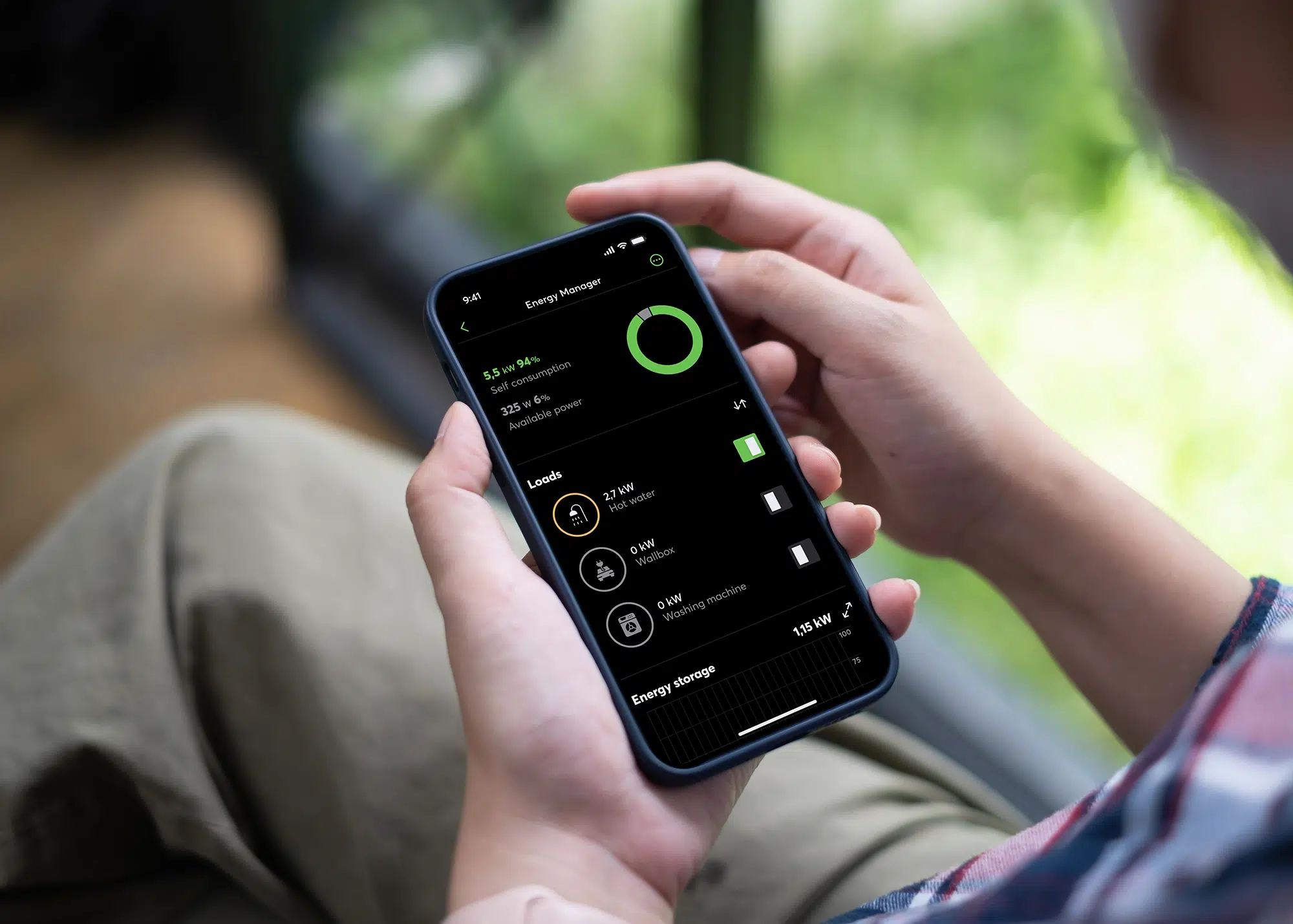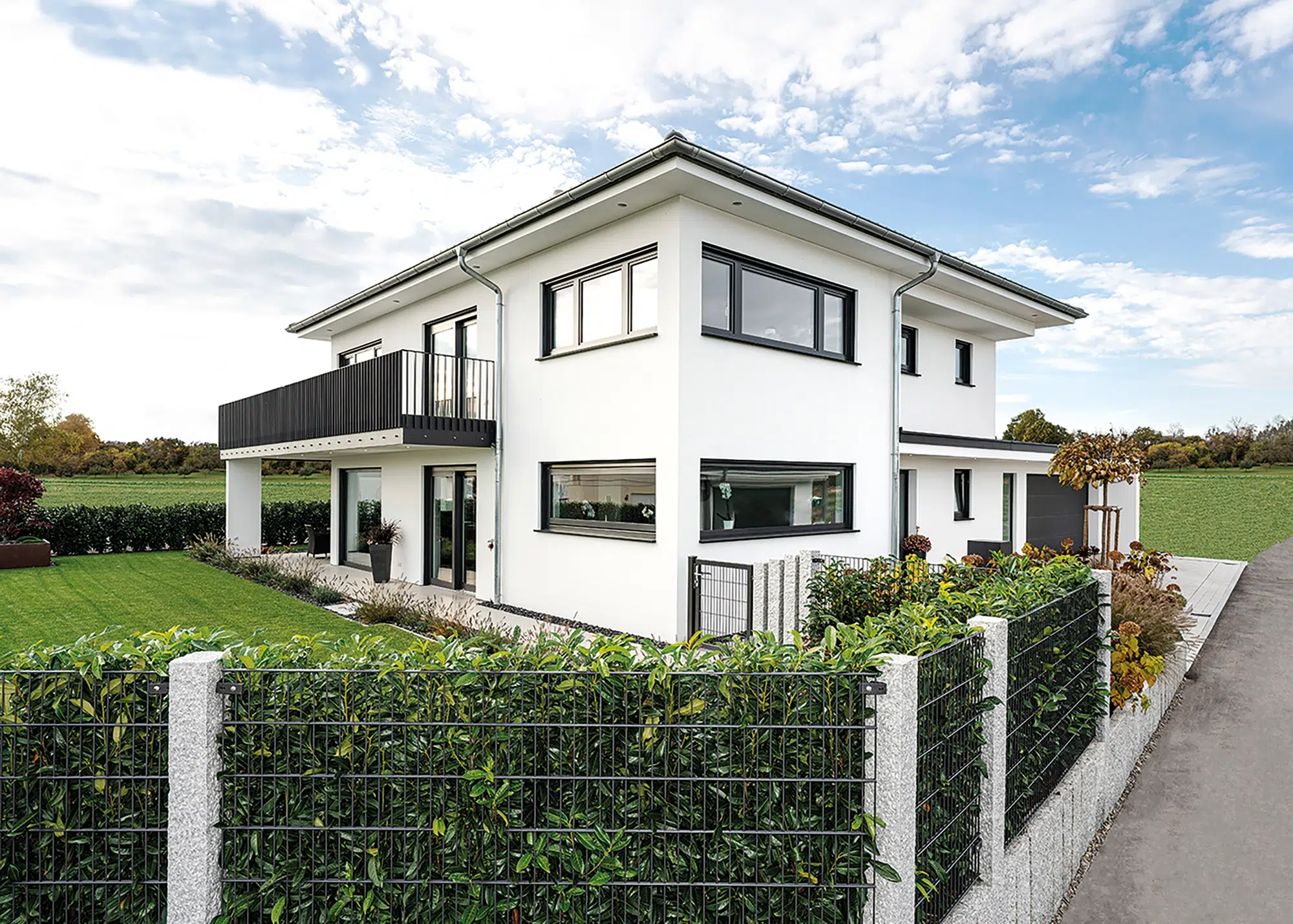
Get your project off the ground with our next virtual training workshop - October 28th at 7pm!
Use code BUILD for 20% off
Get your project off the ground with our next virtual training workshop - October 28th at 7pm!
Use code BUILD for 20% offSmart home technology is transforming the way we interact with our homes. At its core, it involves a network of connected devices and systems that can be remotely monitored, managed, and automated. This connectivity allows homeowners to track their usage in real-time, giving them clearer insight into how and when energy is consumed.
With this visibility, combined with intelligent automation, users can reduce waste, optimise performance and lower utility bills without the need to constantly be manually turning dials and flicking switches.
So, how can smart home technology help with energy management and does it really save you money?
Smart technology should be a central component of every modern self build home’s energy management, not just an add-on. “With buildings being responsible for 44% of global energy use, half of which is wasted, automation isn’t a luxury, it’s essential,” says Nikolay Naydenov, head of partner coaching at Luxone UK.

Loxone’s smart home system comes with a handy app to help manage your energy consumption. By monitoring your usage, you can tweak the settings and functionality to better suit your lifestyle, prevent wastage and save money
Even in super-efficient, well-insulated properties, smart controls are still important. These smart home systems enable active management, adjusting lighting, heating and ventilation based on how users interact with their home and weather conditions. Without them, energy might be being used when it’s not needed. “Smart technology is about more than just turning lights off remotely,” says Simon Johnson, country manager at Theben. “It helps save energy, cut utility bills and improve comfort for homeowners.”
A well-planned, intuitive system can offer a wide range of useful functions for modern homes. “Smart tech can control anything from lighting and heating to even the irrigation system in your garden,” says Richard Whitbread, agency owner at Ampio. This allows for a far greater holistic approach to energy management across every part of your home.
Lighting can be made more efficient through dimmable bulbs, motion sensors and timers that ensure lights are only on when needed. These subtle automations significantly cut down on wasted electricity, especially in areas like hallways, storage areas or bathrooms that are often left illuminated unnecessarily.
Heating and cooling can be fine-tuned with zoned control using smart thermostats. Instead of affecting the whole house, only the rooms in use are warmed or cooled, reducing energy consumption and enhancing comfort. “These systems are in place to prevent waste – think blinds that lower automatically to avoid overheating or thermostats that dial down the heating of empty rooms, helping to avoid the pitfalls of overuse,” says Simon.
Appliance scheduling is another useful feature, allowing homeowners to run washing machines, dishwashers or even electric vehicle chargers during times when electricity is cheaper and the grid is under less strain. You can take scheduling even further with geo-fencing that uses occupants’ smartphone locations to prepare your home for arrival or switch to an energy-saving mode when no one is in close proximity.
The real power of smart technology comes through integration – linking different systems so they can all work together more effectively and efficiently. This creates a responsive, intelligent home that optimises energy use automatically. “When you integrate systems and link them with sensors and real-time energy data, you create a home that manages itself,” says Simon. Rather than relying on manual adjustments, the property adapts seamlessly to the homeowner’s lifestyle and external weather conditions to help deliver long-term energy savings and greater comfort.

This new property features a Theben system with KNX actuators that control switches, heating and ventilation. The system is further supported by Theben’s KNX weather station that monitors wind, rain, brightness, and temperature, automatically adjusting blinds to improve solar control and energy management
An integrated energy management approach brings multiple systems together to work in harmony, rather than in isolation. For self builders, the construction phase is the perfect time to plan this integration. “When you begin a self build, it is much simpler to add smart home infrastructure than traditional wiring, which will reduce the amount of cabling and wall clutter,” says Richard. Designing for integration from the start ensures clean aesthetics and smoother operation of smart systems.
By connecting solar PV, battery storage, heat pumps, mechanical ventilation with heat recovery (MVHR) and hot water systems, homeowners can make intelligent decisions about how and when energy is used. For example, solar power can be prioritised for heating water when demand is low elsewhere, maximising self-consumption. Heat pumps and MVHR can work together to balance heating and ventilation needs efficiently, avoiding system clashes or unnecessary energy use.
Incorporating battery storage into your home adds another layer of flexibility, too, letting the home store excess solar energy for use later, whether to avoid drawing from the grid or to power the home during peak tariff times.
While smart home technology offers impressive potential for energy savings, it’s not without some shortcomings. Any home control system is most effective when paired with an engaged user – someone who is willing to monitor, learn, adjust settings and evolve their usage patterns. Without a bit of active involvement, even the smartest systems can miss opportunities to save energy. Technology should support the homeowner’s lifestyle, but it can’t be expected to make personalised decisions without some input.

With Ampio’s modular system, you can design a smart home tailored to your needs. From lighting control to energy-efficient heating and smart irrigation, its fully customisable modules allow you to create the ideal setup for your home
Compatibility is another challenge. “Not all systems on the market will work together as smoothly as you’d like, especially if they are part of a closed system,” says Jake Stephens, technical director at HiiLIFE. Choosing open, future-proof products, such as KNX or Matter, is essential to avoid being tied to a single manufacturer or needing costly upgrades if you want to change your setup later.
Importantly, smart home solutions cannot compensate for a poorly built home. If insulation, airtightness or glazing are substandard, even the best energy management systems will struggle to deliver savings. The building fabric must be designed for efficiency first, with technology used to fine-tune performance. Ultimately, smart systems are tools – they work best when paired with good design and informed decision-making from the homeowner.
Smart home technology can help cut your bills, but as with most things in life, you will have to put some effort in. Simply installing devices won’t guarantee huge savings, but it does take a lot of the hard work out of your hands. In order to maximise savings, however, homeowners need to engage with the system and make adjustments over time.
Carbon savings are often more immediate than financial rewards. By reducing waste and optimising when and how energy is used – especially when paired with solar panels or heat pumps – smart systems help lower emissions. While the financial return may take time, and will depend on the level of automation you’re investing in, many homeowners find the added comfort and convenience that technology can bring to a house, just as valuable.
Another way smart technology can save self builders money is through time-of-use tariffs. These reward users for shifting energy consumption to off-peak times. Smart devices can automate this, charging batteries or even running appliances when electricity is cheaper. Over time, these micro-savings can really add up.
Can smart tech reduce my heat pump energy use?
It definitely can, but it is a bit of a balancing act to get right. There are two schools of thought when it comes to zoning with heat pumps. Some experts recommend keeping the whole house at a consistent temperature to avoid cycling (when the system repeatedly switches on and off) which reduces efficiency. Others prefer to zone individual rooms for comfort, even if this slightly affects performance.
Smart technology allows you to find a good middle ground. With smart thermostats, occupancy sensors and scheduled routines, you can fine-tune your setup for both comfort and energy savings – without the need for traditional, manual thermostatic radiator valves.
How much ongoing input does smart tech need from the user?
Surprisingly little. A well-installed system should reduce how much you need to interact with it. Sensors, scenes and features like solar tracking will help the home effectively run itself. It’s less about constant tinkering and more about setting things up right once and letting the system do the work.
Smart home tech uses energy itself – so will it really help me make bill and carbon savings?
Absolutely. Especially if you choose products with ultra-low standby consumption. This means that when your tech isn’t actively doing anything, it’s only drawing minimal power.
Can smart home tech adapt to variable renewable energy sources, for instance optimising usage between solar or wind?
As renewable energy becomes more mainstream, systems built on open protocols like KNX are far better equipped to integrate new technologies without needing a full rip-and-replace. It’s a future-proof approach that gives self builders real long-term value.